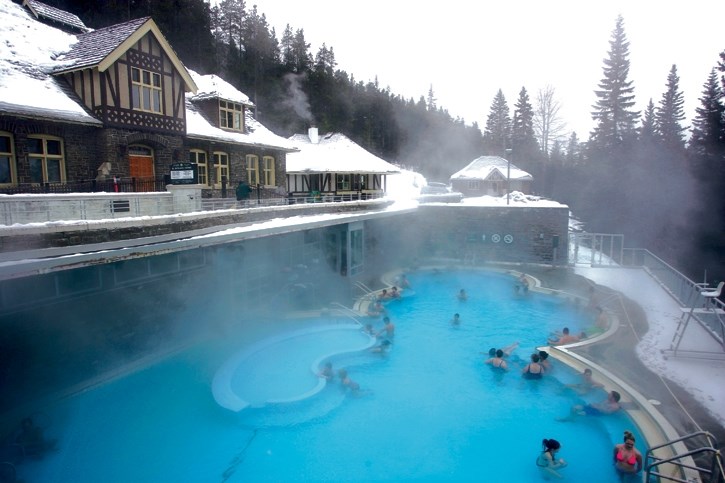BANFF – Two red foxes hanging out in popular tourist areas in Banff National Park have prompted a warning to residents and visitors about the dangers of feeding or getting too close to wildlife.
Parks Canada received reports of a fox investigating backpacks left on the ground at the Upper Hot Springs parking lot on May 19, while there have also been frequent reports of a fox at Johnston Canyon.
With the kick start to the busy tourism season already underway, Parks Canada officials say they want to be proactive in getting the message out about the responsibility residents and visitors have in keeping wildlife wild.
“We want the cooperation of visitors and residents to respect how to behave responsibly around wildlife,” said Susan Staple, interpretation coordinator with Banff National Park’s visitor experience branch.
“We’re wanting to ensure that wildlife, and that includes anything from Columbian ground squirrels to foxes to bears, don’t become accustomed to approaching people or accessing unnatural food sources.”
In the case of the red fox at the Upper Hot Springs parking lot earlier this month, Parks Canada wildlife officers hazed the animal away and there have been no reports of the animal returning.
Wildlife specialists say the fox appears habituated and may have already gotten human food.
“It was reported approaching some backpacks left on the ground, people were there, but it was showing some interest,” said Dan Rafla, a human-wildlife conflict specialist for Banff National Park.
“Any wildlife that does that has probably gotten a food reward, so there’s an element of food conditioning.”
The fox at Johnston Canyon, which has been frequently seen in the area over the past couple of years, has shown no signs off food conditioning, but seems habituated to people, vehicles and infrastructure.
“It’s travelling through the area quite frequently,” said Rafla, noting it generally flees from people.
“Of course, the more time it’s exposed to people it can risk getting some sort of food reward.”
Parks Canada can’t stress enough the importance of never feeding wildlife. It can lead wildlife, like bears and wolves, to associate people as a source of providing food, proving dangerous for both people and the animals.
“Human food kills wildlife,” said Staple.
“There’s different ways to consider what feeding might be. For example, it’s not only hand feeding, but leaving food out unattended, or littering, are also means of feeding wildlife,”
When it comes to camping or picnicking, always make sure food and garbage is stored away securely.
If going for a walk, Staple said store all food immediately in a secure food location, whether that’s a vehicle or storage locker.
“Don’t leave food out, not even for a minute,” she said.
Parks Canada continues with its picnic patrol team this year, visiting popular day use areas such as Johnson Lake, Cascade Ponds, Lake Minnewanka and Johnston Canyon to speak with visitors.
In addition, to help keep wildlife and people a safe distance apart, Banff’s eight wildlife guardians are patrolling the Bow Valley Parkway, Lake Minnewanka Loop and a portion of Highway 93 North seven days a week.
The team provides education to visitors on how to behave responsibly around wildlife. “They also manage wildlife jams,” said Staple, referring to traffic jams caused by people stopping to view animals on the side of the road.
Giving wildlife space to move, eat and go about their daily lives is also imperative. Parks recommends keeping at least 30 metres, or three bus lengths, away from elk, deer and bighorn sheep and 100 metres, or 10 bus lengths, from bears, wolves, cougars and coyotes.
“If you’re viewing wildlife roadside, please stay in your vehicle,” said Staple. “If you’re taking ‘selfies’ with wildlife, you’re too close. ‘Selfies’ with wildlife are not safe.”
Again, Parks want make sure people know it’s the law to have dogs on leashes, noting dogs can stress wildlife and be seen as a threat.
“We want people who are camping, hiking or going into the backcountry to consider leaving your dog at home, or if you bring your dog, it is the law that they must be on leash and under control at all times,” said Staple.
“This is to prevent unsafe situations because off-leash dogs can trigger aggressive behaviour from wildlife, such as grizzly bears and elk, and we don’t want the owners, other people, the dog or wildlife to be in unsafe situations.”
Residents and visitors are reminded to carry bear spray at all times and know how to use it. Any reports of people feeding wildlife should be called in to Parks Canada at 403-762-1470.




